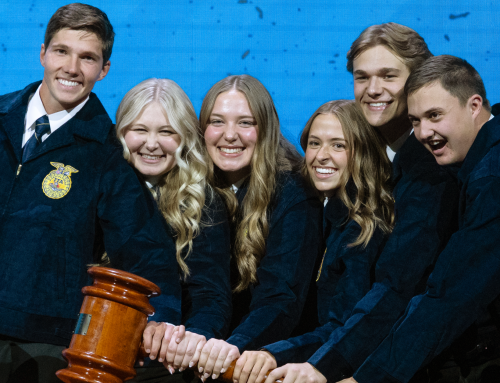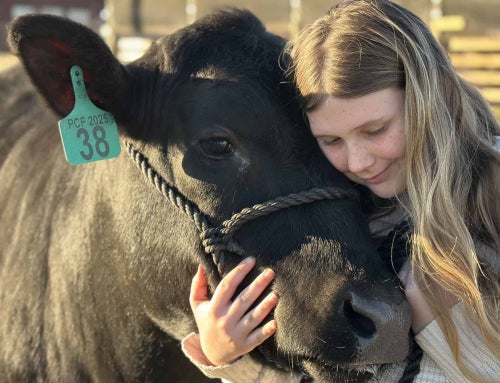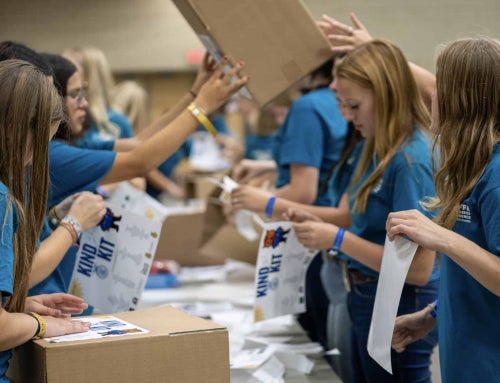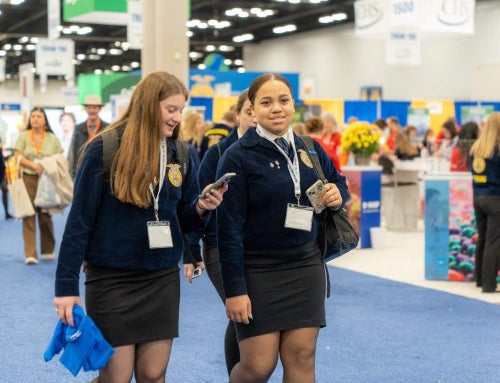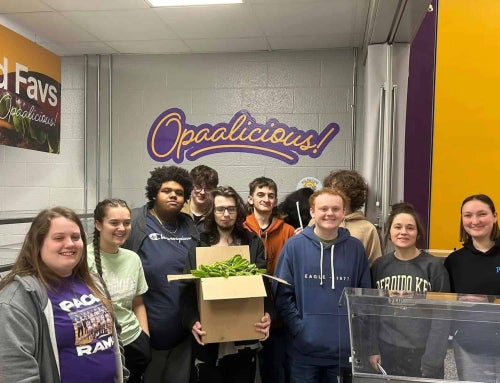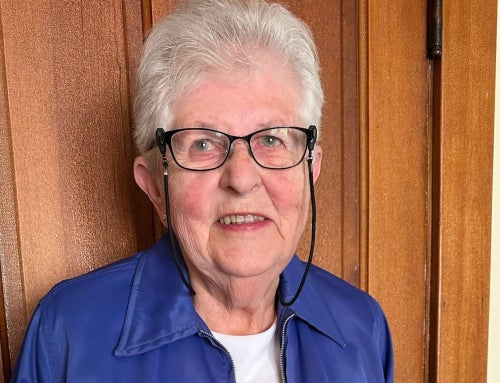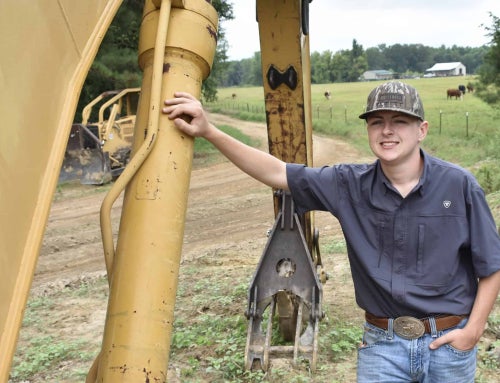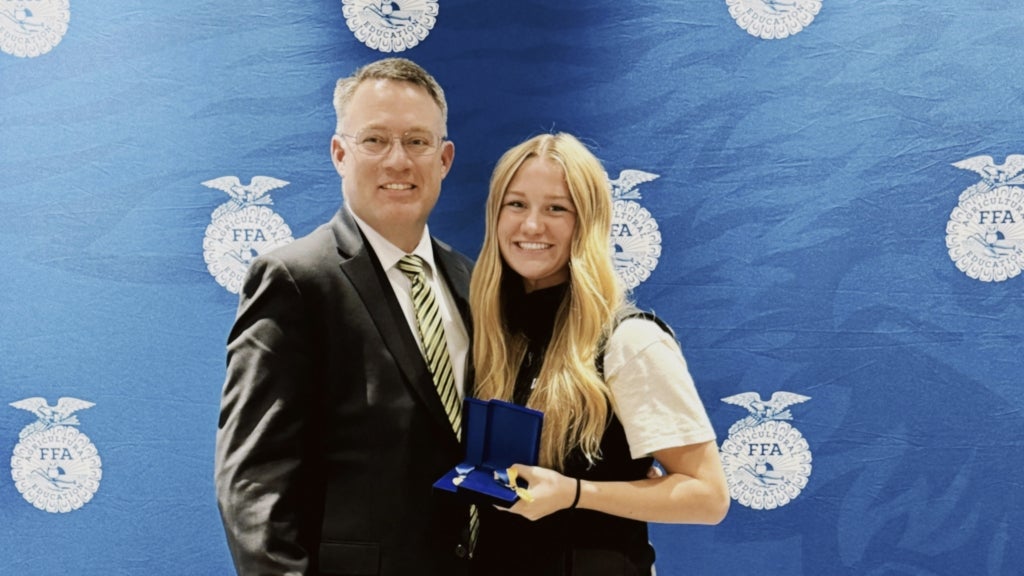
Lucy Barney (right) celebrates her hard work paying off with Rigby FFA advisor Lex Godfrey (left). Photo courtesy of Lucy Barney.
For Lucy Barney, working with Shire and Belgian draft horses is a tradition passed through six generations. Her hard work and lifelong journey recently came to fruition when she was named the 2024 national champion in the Equine Science — Placement Agricultural Proficiency Award category.
Representing Rigby High School in Idaho, Barney’s Supervised Agricultural Experience (SAE) showcased her extensive hands-on experience with draft horses. “I had amazing advisors who pushed me to succeed,” she says.
Life Shaped by an SAE
SAEs are more than just projects. They provide real-world agricultural training supported by classroom learning and mentorship. Barney’s SAE took place at her two family-run operations: Sage Ridge Farms Pulling Horses and the Barney Shires Draft Horse Hitch. These farms offer the facilities to care for, train and prepare 2,000-pound draft horses for competition, allowing Barney to gain experience in breeding, nutrition, training and marketing.
“I’ve worked closely with my family and networked with other breeders and industry professionals,” she says.
Summer Schedule
Barney’s days are long and full of hard work. She balances the physical demands of caring for the horses with the marketing and management responsibilities of running a family operation. A typical day is long, physical and varied.
- 6-7 a.m. — Move irrigation pipes on grazing fields.
- 8-9 a.m. — Clean stalls.
- Mid-morning — Condition Belgian pulling horses.
- Afternoon — Mix custom feed, maintain fences and sanitize the facilities.
- Midday — Capture marketing photos and manage social media accounts.
- 6 p.m. onward — Drive competition horses on six-mile sled routines, then groom, hydrate and turn out to pasture.
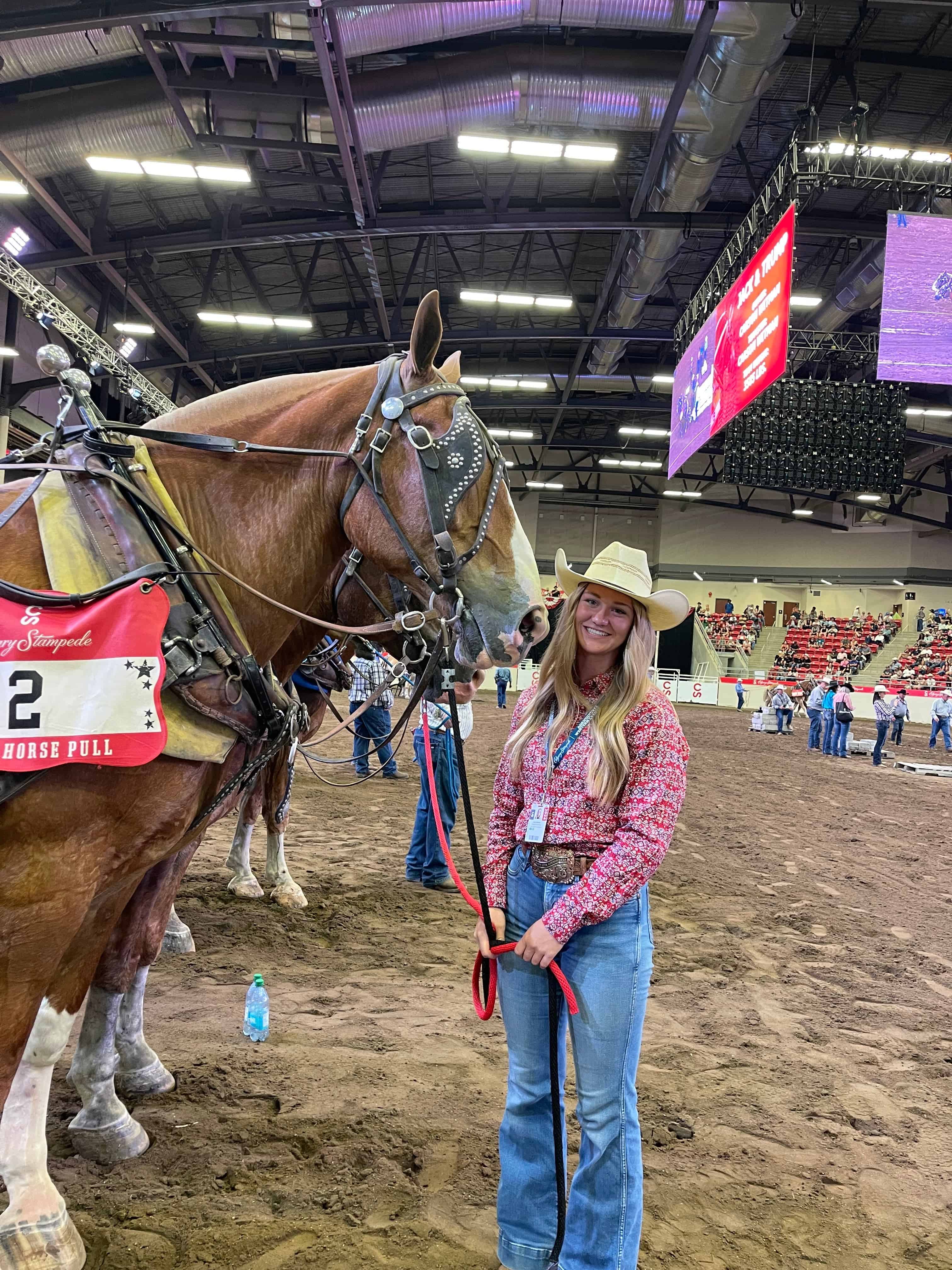
Show days are a chance for Barney to showcase the time, care and attention she devotes to raising and training horses. Photo courtesy of Lucy Barney.
Competition Days
Presenting the horses to judges and show attendees requires careful preparation and planning. These days combine chores, detailed horse prep and, of course, showtime.
- 5-6 a.m. — Clean stalls before the public arrives.
- 7-8 a.m. — Feed and water horses.
- Morning — Wash and groom horses, focusing on their feathered hooves.
- Pre-show — Braid manes, apply bows and prepare the harness.
- 9-10 a.m. — Competitions begin.
- Afternoon — Cool down the horses, monitor their health and feed as needed.
Looking Ahead
Now studying accounting at Utah State University, Barney plans to return to the family operations after graduation. She hopes to manage the business side while staying active in care and competitions.
“I want to continue my passion in the draft horse industry,” she says. “With financial stability, I can help carry on the legacy.”
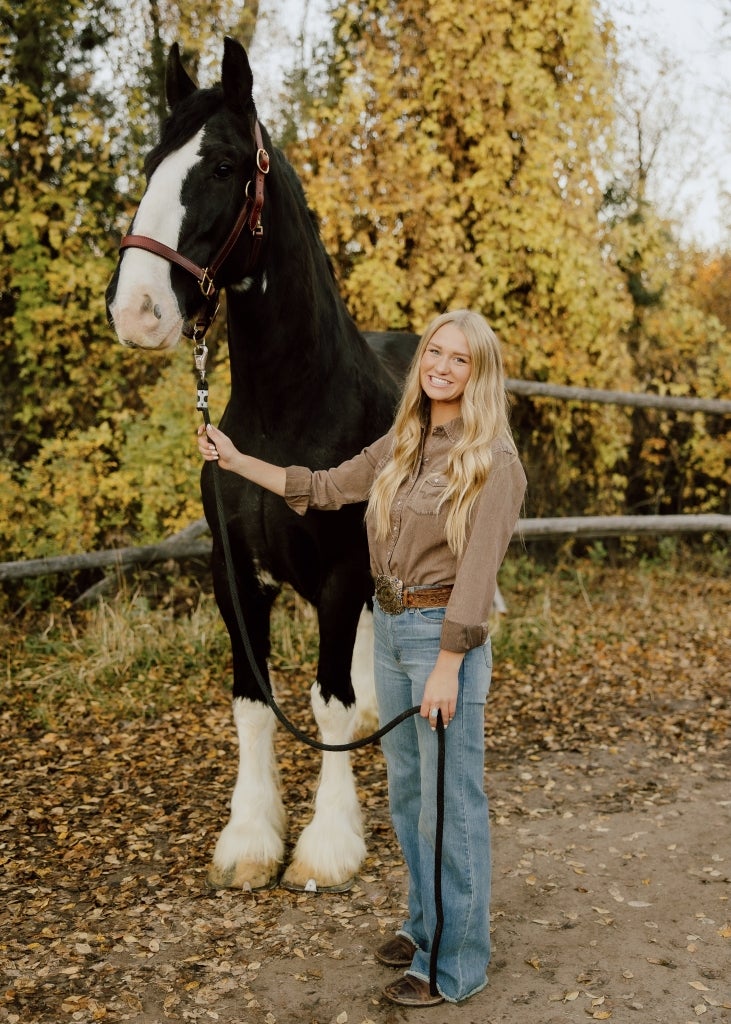
Barney continues to spend time around horses and stay involved with her family’s operations. Photo courtesy of Lucy Barney.
Barney encourages younger FFA members to pursue their SAEs with the same dedication.
“Just go for it,” she says. “There’s nothing to be afraid of, and the opportunities are endless.”
Springboard to Success
Explore the National FFA Agricultural Proficiency Awards categories and access a full list of previous winners.


